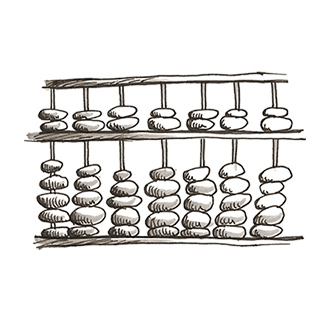
Related Questions
- How do computers perform complex mathematical operations?
- Is computer software always a step ahead of hardware?
- How did people in the olden days create software without any programming software?
- How were we able to navigate from the Earth to the Moon with such precision?
- Why is speed at sea measured in knots?
- Can a computer generate a truly random number?
- When will AI be smart enough to outsmart people?
- Can we use artificial intelligence to generate new ideas?
- Does the outside edge of a ceiling fan blade move faster than the inside edge?
- Is chaos an actual state, or just a name for rules we haven’t discovered yet?
How can I tell if a certain tree is big enough to support a 30-foot zip line?
Get out your calculators, it’s time to do some math…
By Sarah JensenIt seems everybody’s caught zip-line fever. From Florida to Mexico to Nicaragua, outdoor adventure enthusiasts zoom along the gravity-propelled cables strung between tall support structures. Smaller-scale zip-lines delight kids on the playground, and resorts and zip-line parks offer guests a truly exhilarating vacation. But before hosting an afternoon of teambuilding activities with coworkers or a one-of-a-kind bachelor party featuring your own backyard zip-line, it’s a good idea to make sure it’s as safe and sturdy as possible.
“Wood is a great structural element, and using a tree to support the cables would be fine,” says Amos Winter, assistant professor in MIT’s mechanical engineering department. “What really matters is the geometry of the tree. You want to use one with a large enough diameter that the zip-line doesn’t pull the tree over.” While a fat, sturdy tree will withstand a high buckling force and large bending loads, the flexing of a tall, thin tree can result in slackening of the cable — or cause the tree itself to snap under the stress imposed by the zip-line.
Discovering the amount of load a given tree can endure before it will break is no easy task and involves applying Euler’s buckling equation and formulas for determining maximum bending stress, as well as knowing the strength of the wood. Such intricate calculations aren’t really necessary for the backyard builder, who should be able to empirically tell whether a given tree is suitable for use in a zip-line, says Winter. “A tree with a large diameter can give enough stiffness and leverage to counteract the bending loads of a zip-line.” He suggests stringing a cable to the tree and hanging five to 10 times the weight of the intended zip-line-plus-rider. Jiggle and pull the weight, and if the tree holds up under the test, it should be adequate for supporting the actual zip-line. “When testing the system, be careful to stay clear of the cable or parts of the tree that could snap or break.”
Even when you’re quite sure your tree is sturdy enough to support the zip-line, Winter recommends adding safeguards such as guy wires to ensure that only a compressive load is applied on the tree and not a bending load. “The zip-line will pull the tree in one direction and the guy wire in the opposite,” he says. The horizontal forces cancel each other, and the net result in force pushes the tree straight down into the ground so the tree’s roots don’t need to counteract bending loads. The guy wires will also help keep the zip-line taut.
Most important, he emphasizes, is a thorough testing of the zip-line before inviting friends and family to hop on board. “I would make sure a zip-line could support at least 10 times the load you plan to put on it,” he says. “Engineers rigorously test and re-test all the time, particularly if a device could potentially cause injury. You can never be too cautious.”
Posted: May 07, 2013